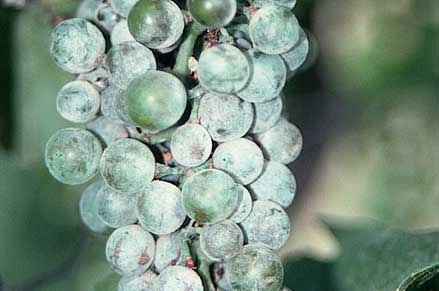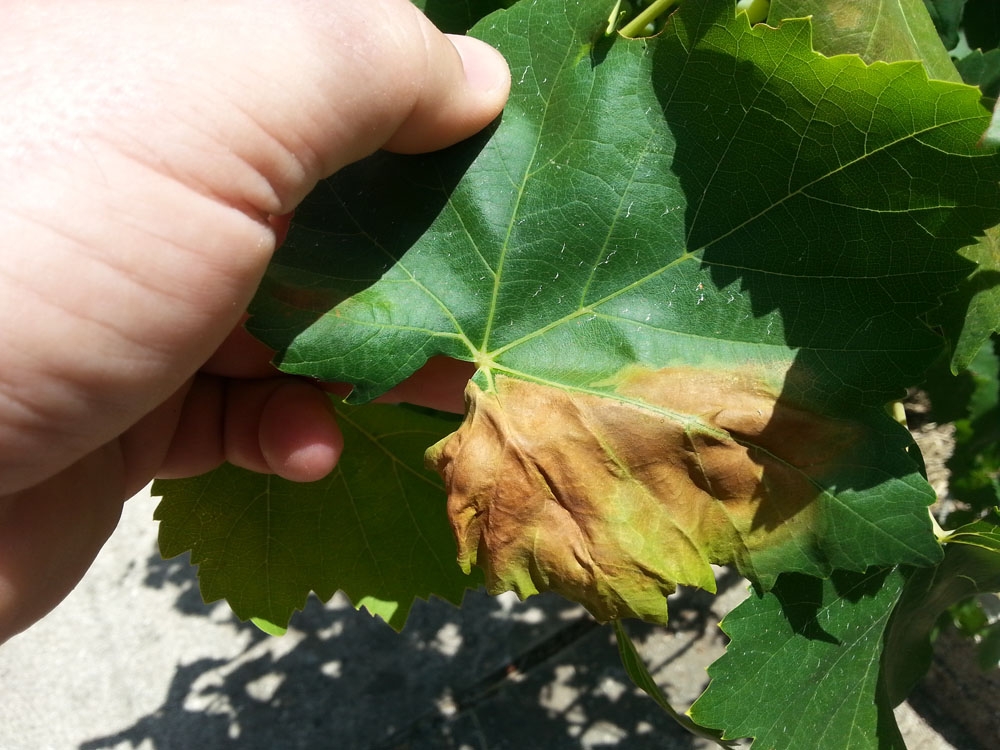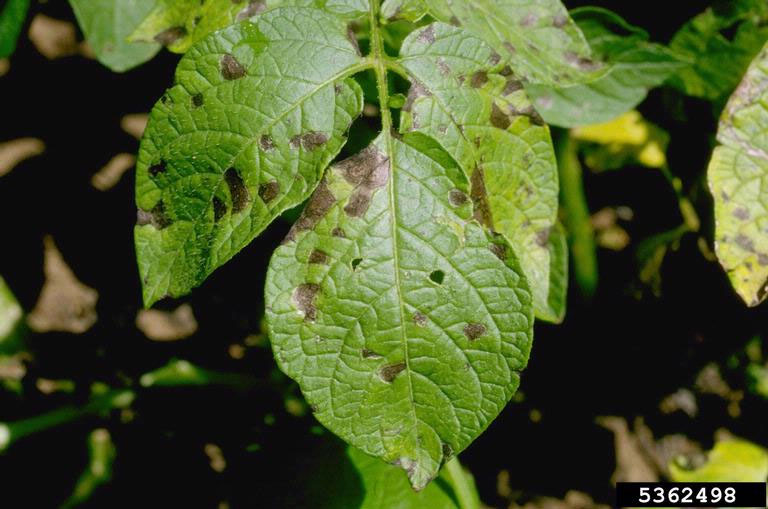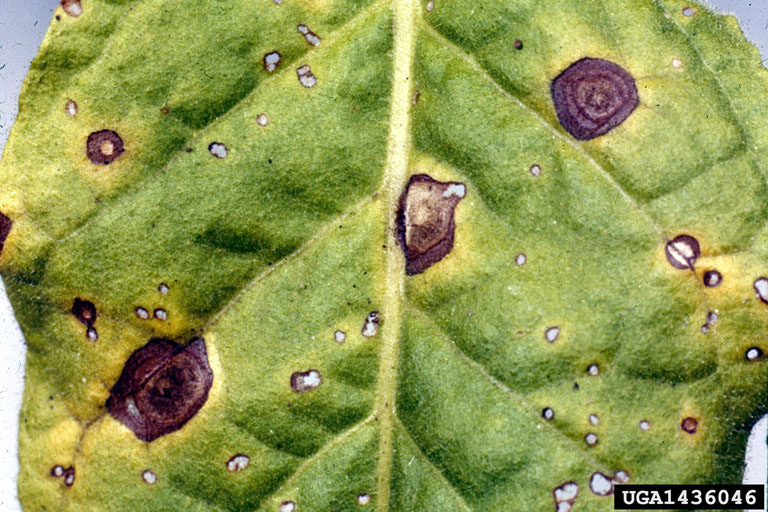Powdery mildew of grapes is one of the most serious diseases of the vine and is widespread in all wine-growing regions of the world. The disease was first described in North America, while in Europe it appeared in 1845. In Greece, where vines are grown, the disease is known by many common names (Στάχτωμα, θειαφασθένεια, χολέρα, μπάστρα, μπασαράς, αλευράς, λόβα, σιναπίδι).
Scientific name: Uncinula necator, Oidium tuckeri, Erysiphaceae
Other name: Powdery Mildew
Greek name: Ωίδιο Αμπελιού, Στάχτωμα, Θειαφασθένεια, Χολέρα, Μπάστρα, Μπασαράς, Αλευράς, Λόβα, Σιναπίδι
Symptoms
All aboveground parts of the vine (shoots, leaves, bunches, tendrils) are affected.
Initially, fuzzy chlorotic spots appear on the leaves, which are then covered by white fuzz (fungal decay = epiphytic mycelium, fruit foci, spores). The infestation may extend to cover the entire stem. In addition, due to the growth of the pathogen, a wavy deformation of the periphery of the growing leaves is observed.
Similar symptoms and lesions are observed on infected shoots and herbaceous plants. In addition, if the infestation occurs before flowering, anthorrhoea is observed.
The berries of the grapes are also covered by the rashes of the pathogen at the points of infection. If the grape berries are affected when they are young, they dry out and fall off. In addition, the attack on the grapes causes the grape berries to crack, which is usually followed by secondary attacks by other pathogens (e.g. botrytis), which complete the damage to the grape bunches. When the berries are attacked after “polishing” they do not crack but show eschars. The berries are susceptible until they reach a sugar content of 8%.
Very often late infestations are observed on the tendrils. At first the characteristic spots of powdery mildew of grapes appear, which are then covered by a white rash. Later, they develop into reddish-brown areas, which can also be seen in winter.
Pathogen – Growth conditions
Powdery mildew of grapes disease is caused by the ascomycete Uncinula necator (Erysiphacae). During the winter, it winters in the eyes in the form of mycelium or, more rarely, in the form of the reproductive organs (cloistocysts). The fungus grows on the surface of plant tissues (ectoparasites) and sends mycelia into the cells to feed. The new growth that will come from the affected buds is quickly covered by a white fluff, where the fungus begins to reproduce by forming its spores (conidia). The spores are transferred to neighboring shoots or stems causing new infections. Tender tissues are particularly susceptible and it does not usually infect leaves older than two months unless they are growing in very shady places.
The grapes are then affected and the disease spreads throughout the vineyard if conditions are favourable.
In general, the disease is favoured by warm weather, but not by temperatures above 35 °C. It should also be noted that the fungus grows best in the shaded parts of the plant, because the sun limits its growth. The presence of water on the plant surface is not necessary for the germination of its spores. This means that even in dry conditions it is possible to start infection.
Treatment
In general, the best method of dealing with powdery mildew of grapes is prevention. Failure to control in time can cause a significant reduction in production and deterioration in product quality.
For successful control of powdery mildew of grapes, applications according to the Agricultural Warning Program or at the 2-3 leaf stage, just before flowering and after binding, with replications depending on the infestation pressure, are recommended. In addition, cultivation measures (correct pruning, pruning, pruning, defoliation, appropriate nitrogen fertilizations) are recommended to avoid creating favorable conditions for the pathogen.
Source
www.bayercropscience.gr
Uncinula necator
Powdery Mildew of Grape – The Ohio State University
Tags: GRAPEVINE • GRAPEVINES • PLANT DISEASE • POWDERY MILDEW • VINEYARD





